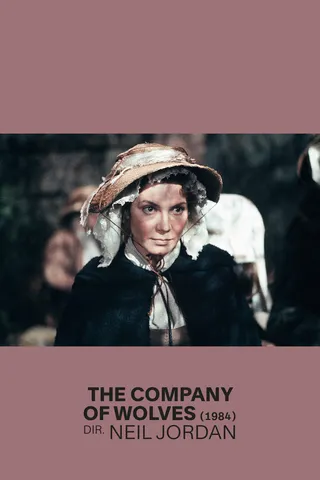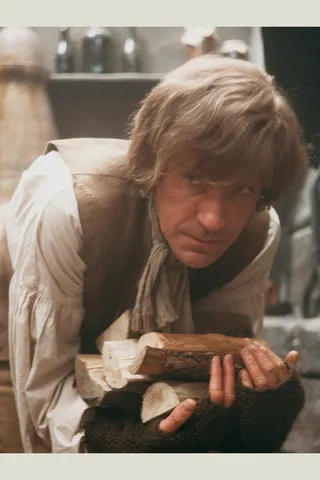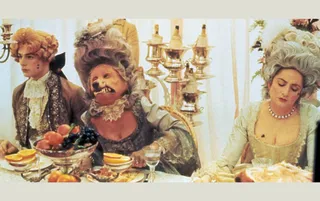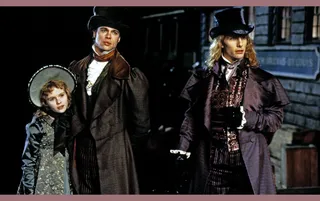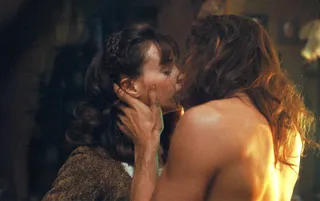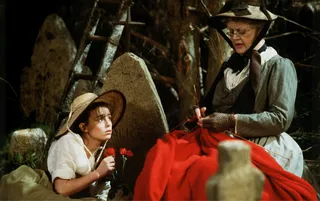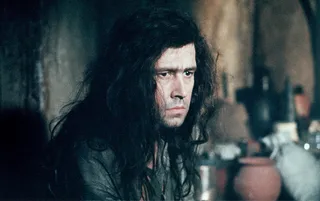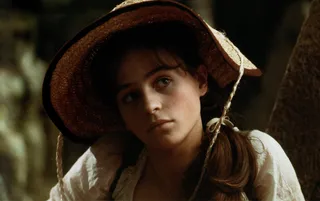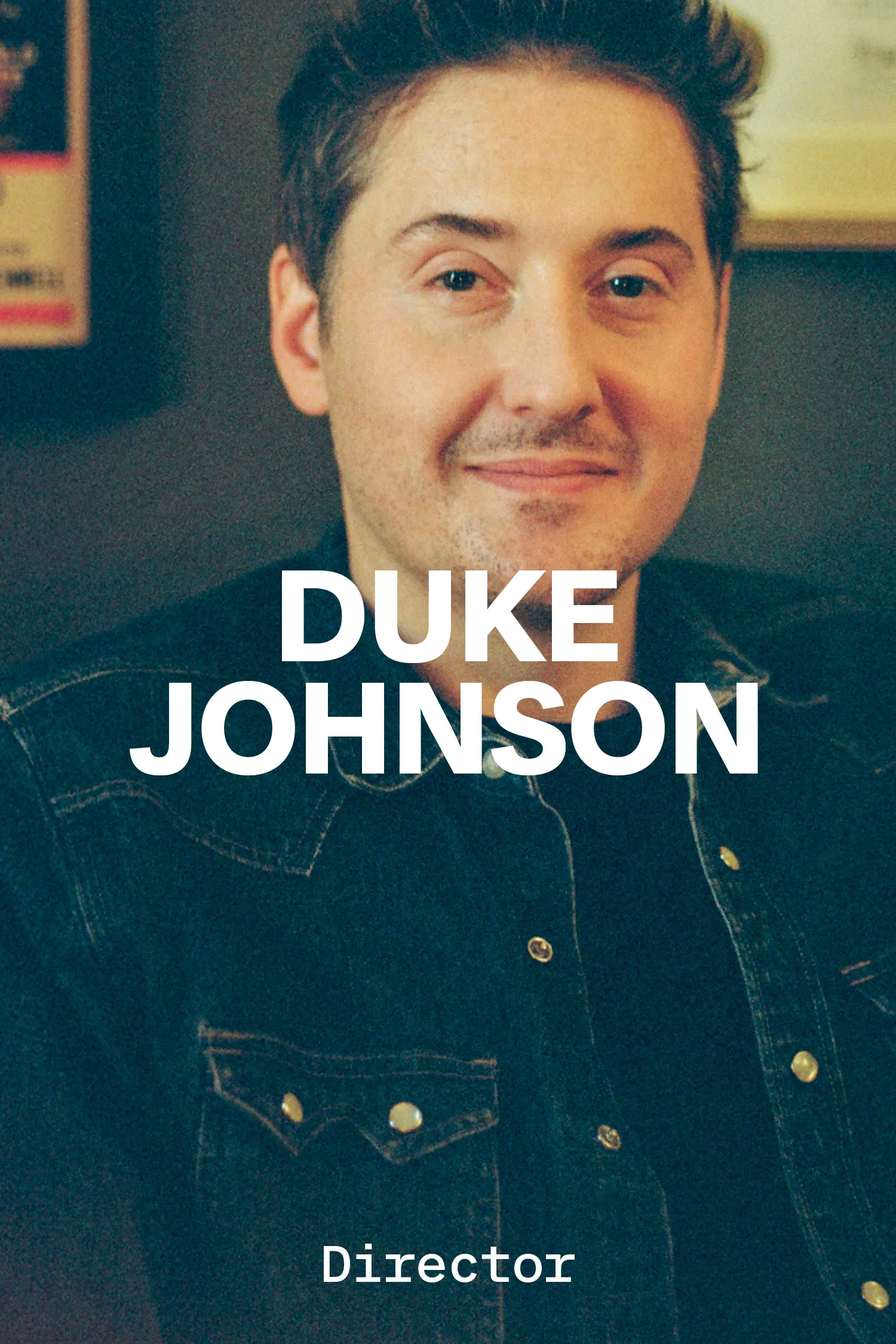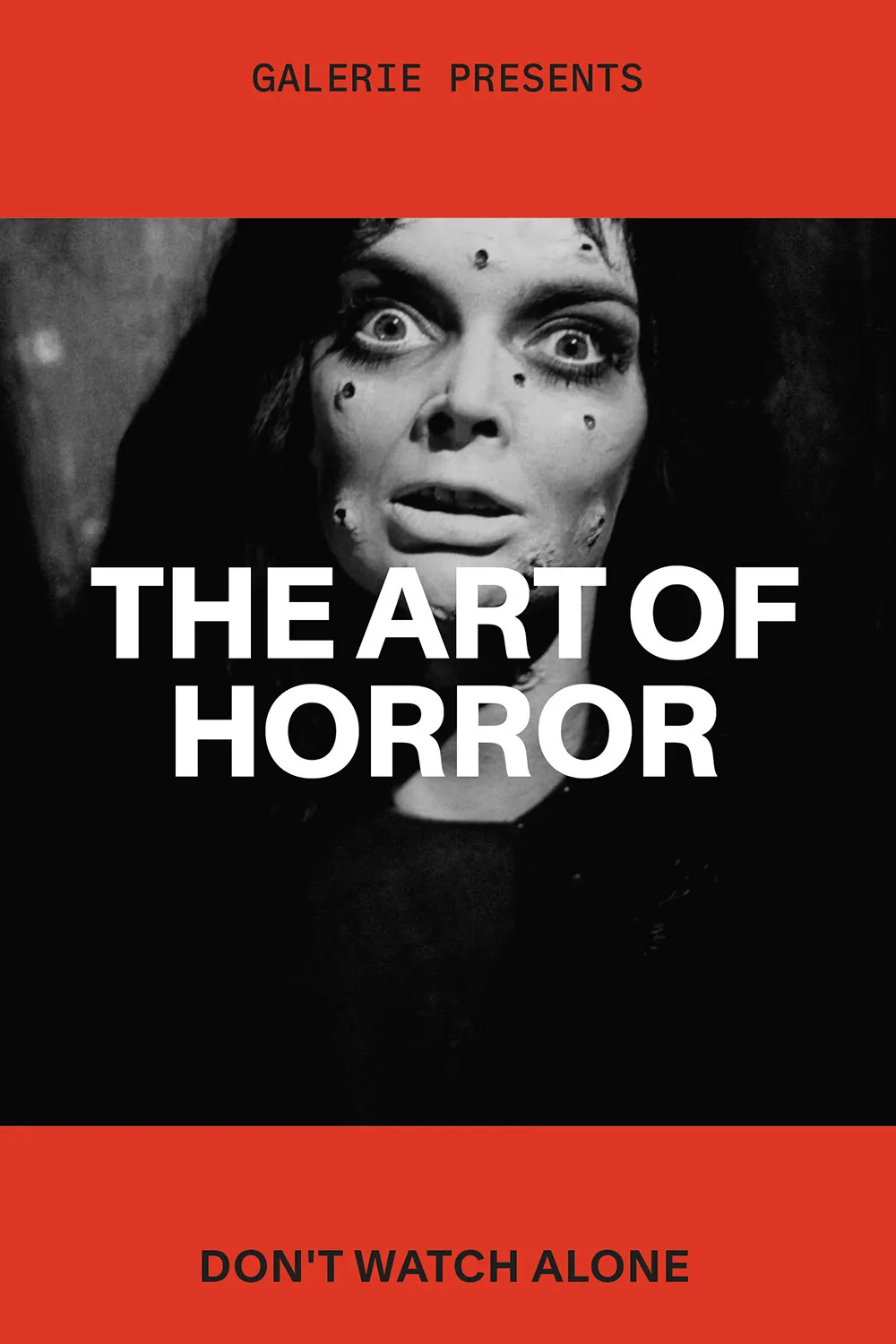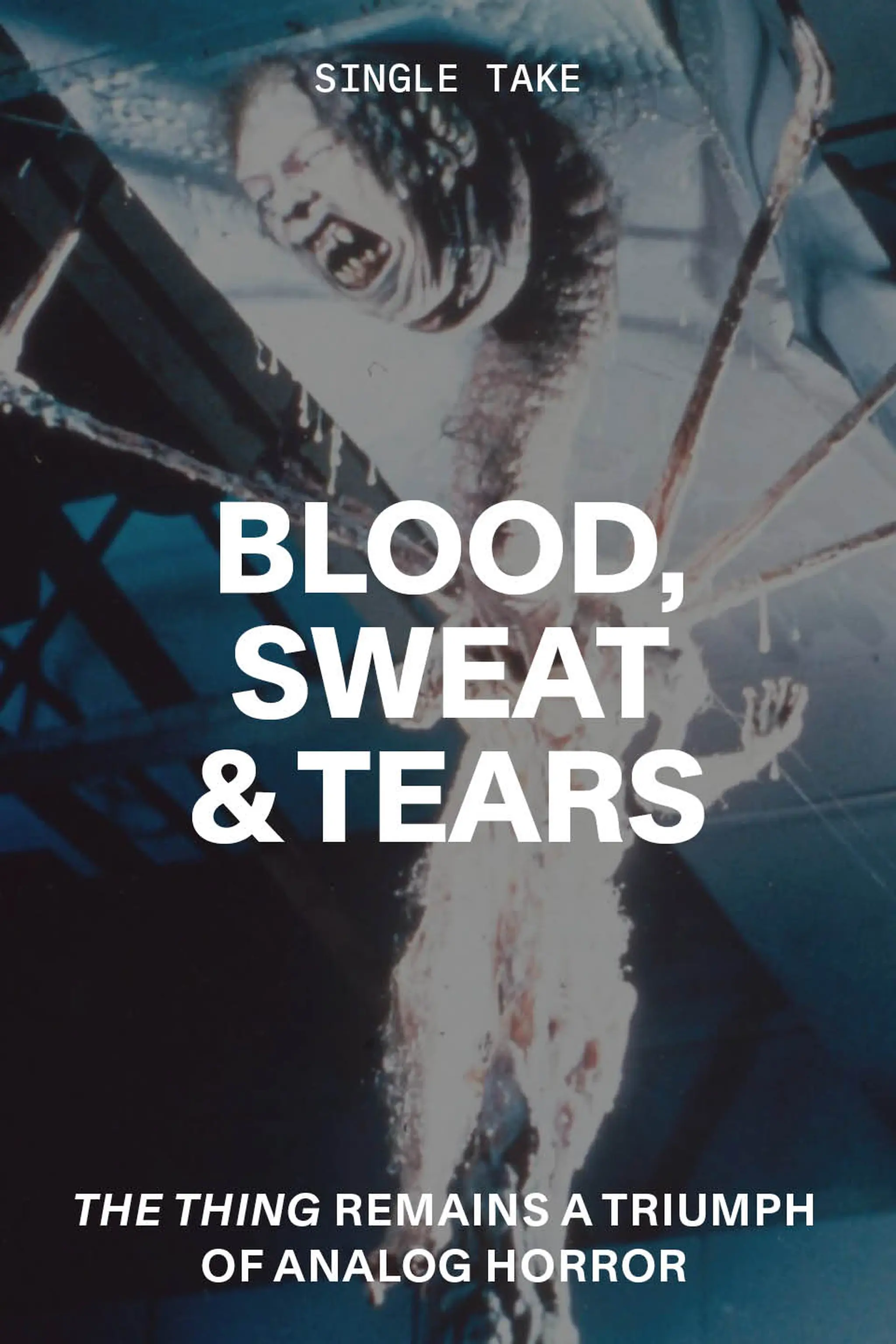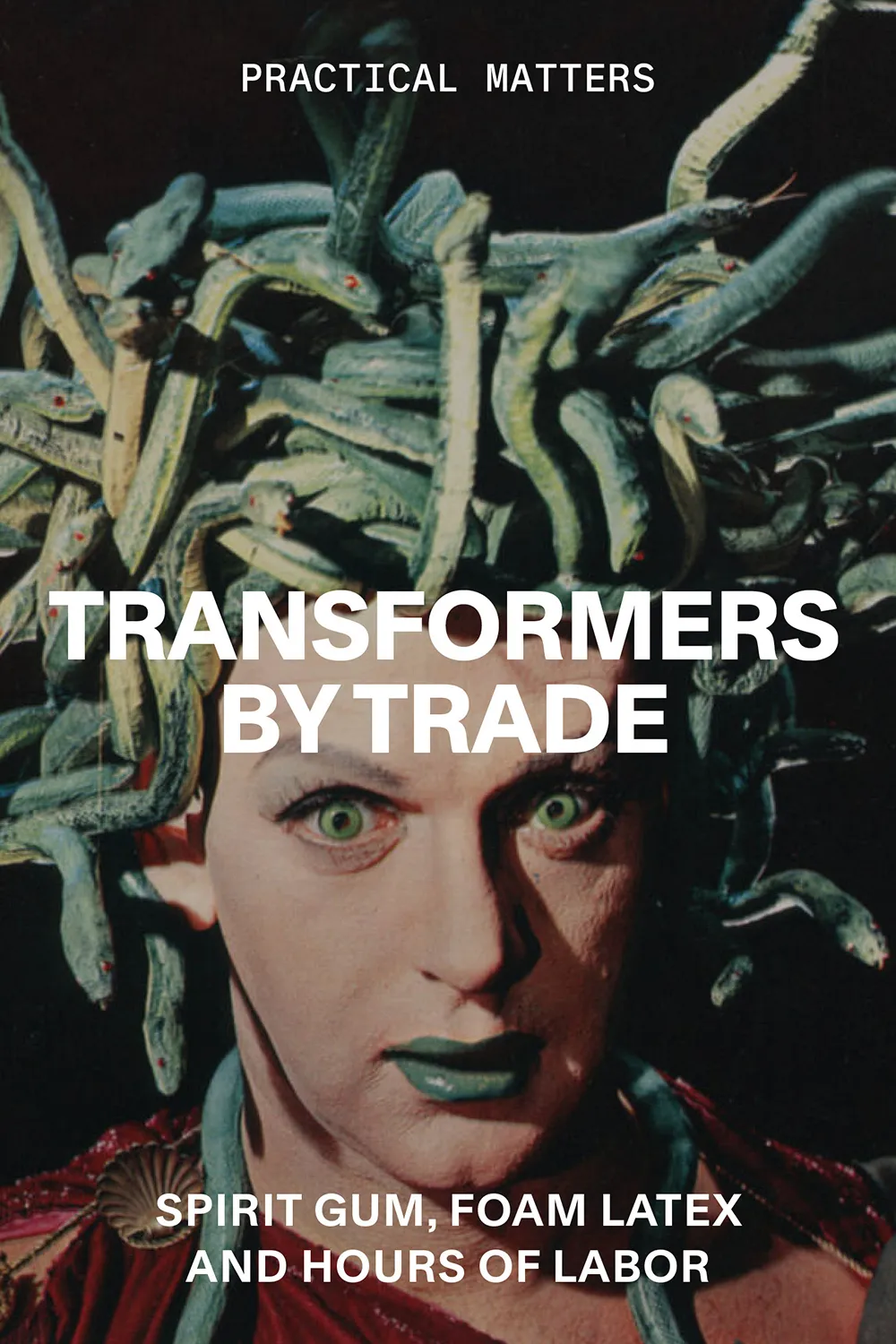Beast Mode: Neil Jordan
By Robert Bound
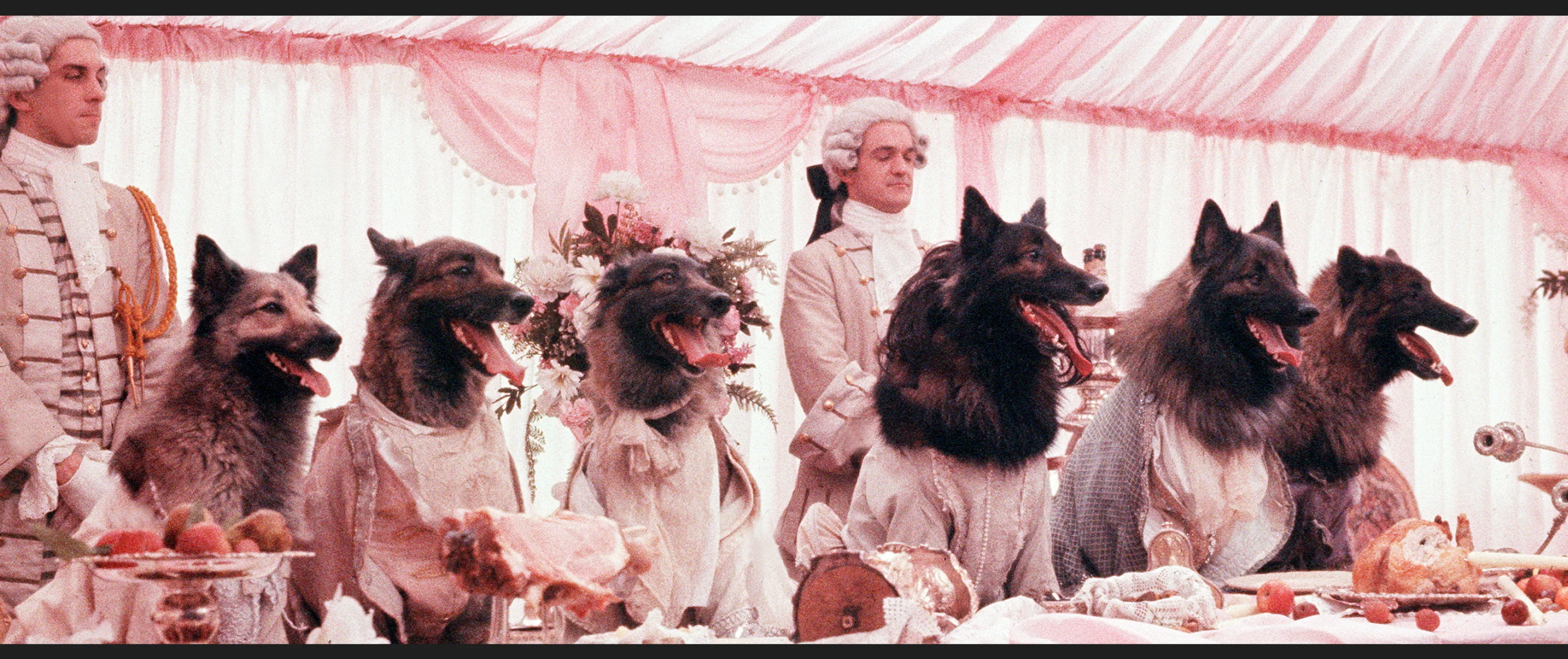
The Company of Wolves, dir. Neil Jordan, 1984
Beast Mode: Neil Jordan
ROBERT BOUND
The literary director on the joys and challenges of crafting his gory-gothic fairy tale The Company of Wolves
October 11, 2024
Dublin-born and -based Neil Jordan is a director, writer and novelist who made his first film, Angel, in 1982, going on to direct a varied array of productions including Mona Lisa (1986), The Crying Game (1992), Michael Collins (1996) and Interview with the Vampire (1994), in which Tom Cruise and Brad Pitt play perhaps the most elegantly wasted of all of cinema’s deathless bloodsuckers. While the stories and themes in Jordan’s work have been diverse—from Irish politics to London gangsters via eternal ghouls—his directorial palette has a more definitive style, an imaginative, rich and poetic pitch that has easily embraced fantasy as much as reality. That fantastical register is one of the hallmarks of his beloved fairy tale mega-mix (and Galerie curator favorite), The Company of Wolves (1984), which stirs a bubbling cauldron of children’s stories, romance, horror shocks and the gothic. While in London promoting his vivid new memoir, Amnesiac (2024), Jordan spoke to Galerie over coffee in Covent Garden.
![]()
![]()
David Warner in The Company of Wolves
The Company of Wolves is based on an Angela Carter short story collection in which we’re really in the realm of fairy tales. What’s the allure of the “Once upon a time” story?
Well, I’d met Angela Carter a while before in Dublin, and she’d expressed an interest in making something together, so I suggested we come up with this portmanteau kind of structure where there are tales within tales within tales within tales, you know? So in whatever structure we choose, within that tale, somebody else tells the tale. It’s a structure I saw in a Polish movie called The Saragossa Manuscript (1965) and Angela was very excited by that idea.
And then you got into a routine of writing together?
I was in a hotel in Soho and she was living south, near Clapham Common. We’d meet in the morning and talk about what scenes we could write that day, that evening. We’d go off and we’d write the scenes, meet the next morning and keep going. I just loved her work, I loved her wicked intelligence, very subversive. She wasn’t so well-versed in the whole world of cinema, but she put it in this kind of alarmingly literate frame. We made a few rules: We said every now and then, there could be events in the scenes that would make no sense whatsoever, but would make sense to one of us. That there could be irrational moments in the whole thing. And it just worked out.
How were those more irrational moments borne out onscreen?
For example, when Micha Bergese, who plays the Huntsman, walks into Granny’s [Angela Lansbury] house and Granny turns to him with a shotgun—and he whacks her head off, right? And it explodes like she’s made of porcelain. Or when Rosaleen [Sarah Patterson] climbs up the tree and finds a nest with tiny little eggs and they open to reveal a Buddha or a baby—stuff that really came out of the surrealist end of things. We agreed we’d entertain those ideas and if they made emotional sense we’d put them in. And, of course, the idea of the wolf girl climbing down into the well at the end. We went on a trawl through fairy tales, really.
Did the writing get you to these moments or did they appear as visual ideas first that then needed to be written toward?
We wanted to broaden out and take a scalpel to the idea of fairy tales, really, to find the bloody reality underneath them. From Angela’s point of view, it was a story about puberty, you know? We finished the script and it was the strangest kind of thing: I brought it to people who I’d worked with before, who read it and said, “This is nuts, why do you want to do this?”
And next you’re there at Shepperton Studios, making the film with these incredible set and prop makers. Tell us about that process.
Anton Furst [who won an Oscar for Batman] was the production designer and was such a lucky find, because I couldn’t make the film without the forest that he delivered. We were looking at forests around Blackheath, real places at first, but Anton said, “No, we have to build this because these trees don’t exist.” So one goes on a journey with Anton. What could the trees be like? We designed trees that were like high-heeled shoes, trees where the bark was like musculature. We just had a blast with it.
There was a lot of creativity wafting through the air, then?
There was, and there was a huge amount of work and effort. We were working with a crew that had just done Star Wars or had come off a Ridley Scott movie. The crew were used to big Hollywood productions, and that was the main trouble. The main difficulty was because our film needed huge involvement from animatronics and special effects teams. And you know, what we were doing was actually a bit absurd. There were a few people who did understand this world: Christopher Tucker, who did makeup and effects, and Angela Lansbury, who’d been in ridiculous fairy tales herself, like Bedknobs and Broomsticks—she was bright and playful enough to understand the logic of the storytelling.
Did those visual effects make a difference to casting?
Well, for Micha Bergese, besides him having to wear these haptic lenses that turned the whites of his eyes yellow—it’s an entire lens that covers your eye and they’re very painful—he then had to transform into a wolf. Micha was a dancer and he had this extraordinary physicality, which he needed for that role, to be able to become a wolf. There were so many challenges, but the main challenge was that one—becoming a wolf.
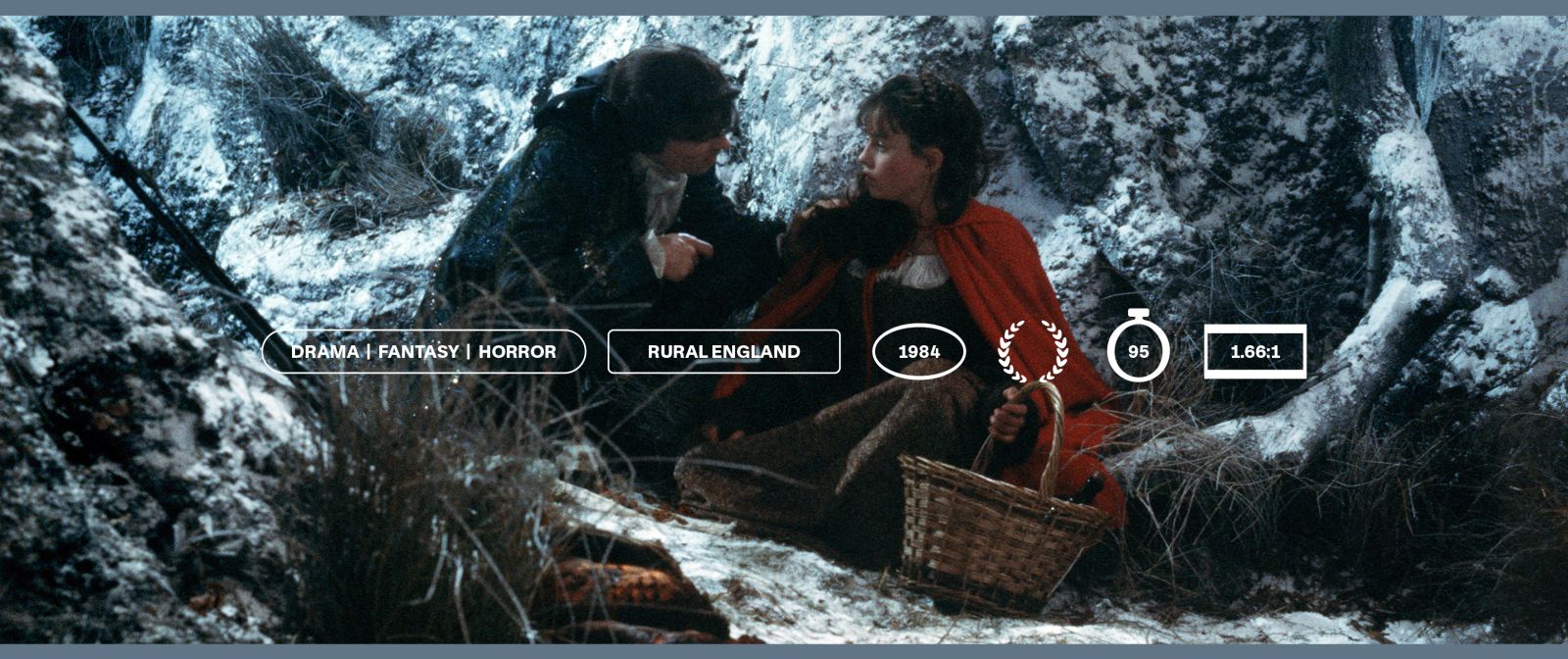
“I did toy with the idea of casting Andy Warhol as the Devil.”
It’s quite a creative chunk of flesh to rip into as a director, isn’t it—the transformations?
Yeah, but it was fascinating, conceptually very interesting. I remember talking to Chris Tucker about how it could work. Have you got a pen? [Jordan draws two rough silhouettes in my notebook to mark out human and lupine profiles.] Our problem is turning this—a flatter sort of face, with an eye here and a little mouth down here—into this, with a big, pointed nose and this mouth. So basically, how do we turn this shape into that shape? Sorry, it’s a really stupid drawing, but that was the physical problem, the physical mystery. So the movie itself set up a whole set of problems that needed solutions. We spent a lot of time on that.
The rest of the cast seem similarly unchangeable?
Yes, we had Sarah [Patterson, as Rosaleen]; Angela Lansbury, of course; David Warner. And then we had to cast the Devil. It was Angela Carter’s idea that the Devil should arrive in a white Rolls-Royce in the forest, driven by Rosaleen, which was rather magical. I did toy with the idea of casting Andy Warhol as the Devil, and so Stephen Woolley [Jordan’s longtime producer] went off to New York to meet him and he said he’d be very happy to do it but he’d been shot by Valerie Solanas and was recuperating, but if we could shoot those scenes in New York he’d happily play the Devil. But we couldn’t afford to do that. But I don’t want to denigrate Terence [Stamp, who played the part], because Terence did a wonderful job.
Of course, he’s quite the presence.
The only disappointing thing to me about the movie is the ending. We never really solved it. It’s about a young girl realizing there’s a beast within her that meets the beast in men. That is her conclusion through the entire journey, and the scene we wrote with Angela [Carter] was basically that Rosaleen wakes up in her bedroom and she starts bouncing up and down on her bed. And then she dives into the floor—it parts like a swimming pool and becomes floor again—and she vanishes. But we couldn’t realize it. We actually tried building a wax floor that somebody could sink through. I think somebody, Mr. Woolley probably, came up with the idea of all these wolves and the young girl screaming [which became the actual ending on film]. I mean, I love the image of the wolves charging through the painting, but the film should not have ended on a note of terror for me.
The parts of the film that are most memorable to you, do they stick out because of the work involved in making them at the time or because they’re a pleasure to watch after the event?
Well, The Company of Wolves had a 4K restoration [for a Blu-ray release] and so I watched the whole thing again for that and realized that I would have reedited some sections of it, I have to say. But it’s attained such a cult status and I’m sure a niche audience is very attached to it, so that when I even ventured the possibility of doing anything to it, it could have meant howls of outrage. But, for example, when Stephen Rea is tearing the flesh off his face, it takes far too long, for me. But then the transformation of the wolf coming out of Micha Bergese’s mouth is magical and it’ll always be magical. I think one of the most successful transformations of wolf into human being is when the wolf’s head is lopped off and it falls into a vat of milk—and up bobs the head again, with Stephen’s face. But that’s so simple, that’s like something that [F.W.] Murnau could have done. To me, that’s rather beautiful.
![]()
A wedding party scene from The Company of Wolves
![]()
Interview with the Vampire, dir. Neil Jordan, 1994
It is beautiful and it’s perhaps the most unsettling image in the film.
Oh, is it? Oh, thank you! It was very easy to do, actually. We got the big wolf’s head, got the vat of milk. We blocked off the camera. Dropped the wolf’s head in, froze the camera. Dropped Stephen Rea’s latex head in there, let it bob to the surface—and bang, there it was.
Is it right to say that the beauty in the film is very important, too?
Oh, yeah. The whole movie had to be very sensitive. It had to be because it’s about a young girl’s sexual awakening. You know, I think one of the images that, to me, is emblematic of the movie is when the wolf girl cries and her tears hit a rose and the rose turns red. And when I look back at it, it’s so simple to do those kinds of physical effects, but they’re so effective. The props department constructed a rose from a certain kind of paper that had a red dye in it so that when the water hit it, the red dye flows and it’s a beautiful image. I suppose most of the effects that we see in that film would be achieved through digital trickery now. But your eye perceives it as that, whereas when you see a physical event, like your white rose turning red, it is a physical thing and has its own emotional impact.
So physical effects land differently?
I think people should play with cinema much more. I just saw Tim Burton’s new Beetlejuice [Beetlejuice, Beetlejuice] and that pivotal sequence where it’s all done with puppets? You know, the audience just gets it immediately. He’s obviously a constructed doll, but he’s also real. That forces me, as a director, to actually make decisions that are in-camera: so you’re not waiting to see what the visual effects team will do to complete an image because you’ve already made it and can see it in front of you. It’s a totally different thing, it really is.
And the wolves themselves?
Well, the main problem really was the wolves. You know, wolves are kind of dangerous. We could trace two wolves in Britain and we used them on set. And they were very unpredictable. So we had to find animals that looked like wolves, like a malamute, and then dye them. But you know, it was effective and we made it work, I think. If you have a half mirror below the camera lens and you have a little tea light in there, you could shine a light into the dogs’ eyes and as long as you’re no more than a 25-degree angle away, you get the reflection and their eyes glow red. It was lovely.
Sarah Patterson, Angela Lansbury and Stephen Rea in The Company of Wolves
And later you made Interview with the Vampire—a luxuriant, funny, sexy film as well.
Yes, and that’s interesting because after Angela and I had written The Company of Wolves she wanted me to make another film with her, and it was to be called Vampirella. She wrote a small script, and it wasn’t as realized, let’s say, as the whole complex of ideas we had for The Company of Wolves. I was thinking about it, and then she died, tragically. So when I came to make Interview with the Vampire, in many ways it was an homage to Angela, to that final film that went back to Scottish history and a complex set of things that weren’t as immediately approachable as “Little Red Riding Hood.” Anne Rice [the novelist on whose book the film was based] called me up and she says, “I want to tell you that The Company of Wolves is Lestat’s favorite movie.” She was talking about the main character as if he was real, which was a bit weird, but at least Lestat [a louche vampire played by Tom Cruise in the film] loved the movie, let’s put it that way.
Reading your memoir, Amnesiac, and learning that, as a boy, you often saw Bram Stoker’s house in Dublin, it seems like that might have started a red thread toward the gothic for you, then?
Yes, I grew up in Dollymount on the northside of Dublin and the Fairview was the nearest cinema. To get there I had to cycle past Bram Stoker’s [childhood] house, which was on a Georgian crescent of buildings, all crumbling and decaying, all that white paint peeling. To me, it was wonderfully creepy. I mean, if I wanted to see a Hammer version of Dracula, I could just walk past Bram Stoker’s house.
